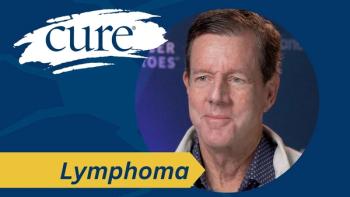
Isa-KRd Elicits Responses in Some With Newly Diagnosed Multiple Myeloma
“Patients did great” with a four-drug regimen for multiple myeloma, an expert told CURE®.
Patients with newly diagnosed multiple myeloma treated with the four-drug combination of Sarclisa (isatuximab), Kyprolis (carfilzomib), Revlimid (lenalidomide) and dexamethasone (a regimen
“Patients did great with this,” Dr. Elizabeth O’Donnell, the Director of Early Detection and Prevention at the Dana-Farber Cancer Institute and an assistant professor of Medicine at Harvard Medical School in Boston told CURE® in an interview.
O’Donnell was among the researchers on the study, findings of which were published in The Lancet Haematology.
Patients received four 28-day cycles of Isa-KRd, followed by consolidation therapy involving either upfront hematopoietic stem cell transplantation (HSCT) and two additional cycles of Isa-KRd or deferred HSCT with four additional cycles of Isa-KRd.
At a median follow-up of 26 months, 32% of patients, or 16 of 50 patients, achieved a complete response (the disappearance of cancer) after four cycles; researchers noted in the study that this did not satisfy the trial’s primary endpoint, but O’Donnell attributed that failure to the trial’s design, not to the treatment regimen.
“I think we created the wrong endpoint in the absence of data …[when] we originally designed this,” she said. “I think if you look now you can see in all of the studies that have been done in [four-drug regimens] that you do see this kind of greater depth of response beyond the four-cycle mark, but we chose four cycles because that's kind of the standard endpoint where people go to transplant.”
The overall response rate (patients who responded partially or completely to treatment) was 90% (45 patients), with 78% (39 patients) achieving a very good partial response or better.
After the completion of induction or consolidation therapy, 58% of patients (29 patients) had achieved a complete response, with the objective response rate being 90% and 86% having achieved a very good partial response or better.
Researchers reported that the most common grade 3 (severe) or 4 (life-threatening) side effects included neutropenia (low levels of neutrophils, a type of white blood cell; 26% of patients), elevated alanine aminotransferase (increased amounts of an enzyme that can indicate liver damage; 12% of patients), fatigue (6% of patients), thrombocytopenia (low count of platelets; 6% of patients), acute kidney injury (4% of patients), anemia (low amount of red blood cells; 4% of patients) and febrile neutropenia (fever and low count of neutrophils; 4% of patients).
Additionally, grade 1 (mild) to 2 (moderate) infusion-related reactions were seen in 20% of patients, grade 1 to 2 hypertension was seen in 14% of patients with one grade 3, and there were two deaths that were assessed as being unrelated to treatment.
‘Stimulate Our Own Immune System to Do Its Job’
O’Donnell explained the science behind Sarclisa, a CD38-targeting monoclonal antibody.
“Monoclonal antibodies are used in a variety of different disease settings, not just in cancer, we use them in autoimmune diseases, because what we're really doing is piggybacking on the concept that our body already does, we produce our own antibodies that can target different pathogens or things and create an immune complex that will then be cleared out,” she said. “So, we can stimulate our own immune system to do its job. So, we're just leveraging the technology that we see our body doing naturally in a very specific fashion.
“And so, when we give a monoclonal antibody, that monoclonal antibody is designed [so that] it mimics the antibodies that we naturally make, but it is designed to go after proteins [such as CD38] that are only on the bad cells, so only on the cancer cells and preferentially clear those out.”
O’Donnell and her colleagues combined Sarclisa with a three-drug regimen that, she said, had already been proven to be effective.
“There were other studies that had shown the efficacy of this regimen, the three-drug regimen, in high-risk patients,” O’Donnell said. “And so, we were taking this combination and bringing it into patients who had just been diagnosed with multiple myeloma, really trying to go with what we thought at that time was the most aggressive four-drug combination we could offer.”
Kyprolis is a type of drug that inhibits an enzyme called proteasome, which prevents the growth of cancer cells while killing them, according to the National Cancer Institute, while Revlimid is a drug that may help the immune system kill abnormal blood cells or cancer cells and prevent the growth of new blood vessels that are necessary for tumors to grow, and dexamethasone is used to reduce inflammation and lower the body’s immune response.
“The idea is that if we combine different types of therapies, so drugs that work in different ways to attack the plasma cells in multiple myeloma, we can increase the efficacy through this kind of synergy of using multiple different approaches,” O’Donnell said.
For more news on cancer updates, research and education, don’t forget to




